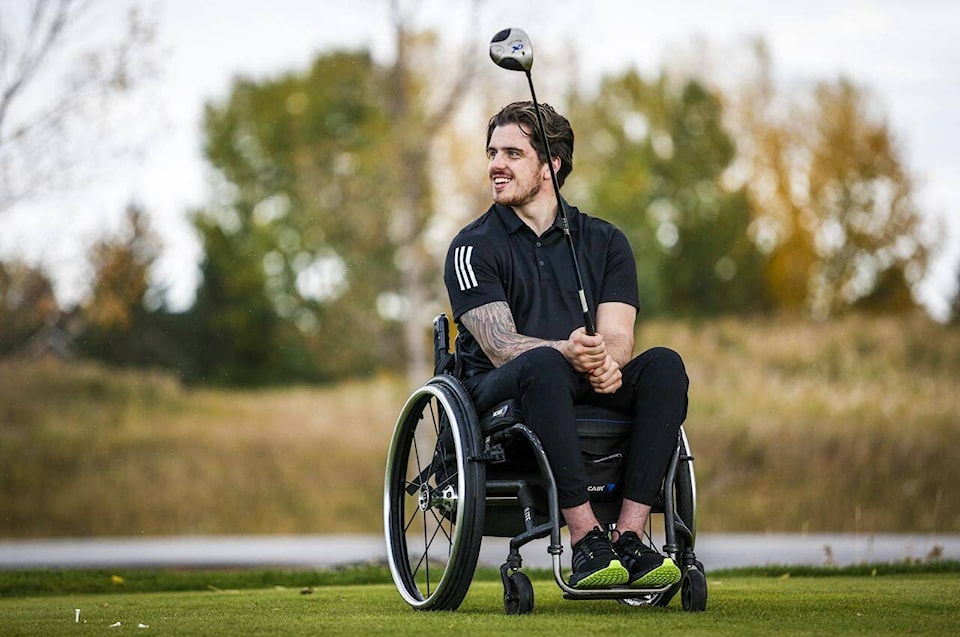Spending the last five years using a wheelchair has given former Humboldt Broncos hockey player Ryan Straschnitzki a new path forward.
The 23-year-old from Airdrie, Alta., says so many times friends and family have had to carry his chair up stairs, wheel him down sketchy ramps and find other ways to get him around narrow doorways.
So he’s studying how to make buildings more accessible for the disabled.
“Having lived this experience for five years now and going travelling all over the world and just realizing how inaccessible places are, especially Calgary, where I’m most of the time,” he said, “I realized that maybe working toward making things a little more accessible … these sorts of problems don’t have to be encountered by anyone else.”
Straschnitzki was paralyzed from the chest down on April 6, 2018, when a semi-trailer ran a stop sign and barrelled into the path of the junior hockey team’s bus in rural Saskatchewan.
Sixteen people died and 13 were seriously injured.
Since then, Straschnitzki has played sledge hockey and become a brand ambassador for Adidas. And he recently completed an accessibility certification course with the Rick Hansen Foundation about a national rating system that measures the physical access of buildings and other sites.
Hansen, who created the foundation, is best known as the Man In Motion for his wheelchair trip around the world in the 1980s to draw attention to people with disabilities and find a cure for paralysis.
He has been in regular contact with Straschnitzki since the Broncos crash.
“Rick and I had a couple of conversations and we realized Canada, in general, is a little behind the eight ball on accessibility,” said Straschnitzki.
“So I took this course to learn a little bit more about universal design, so that architecture is more accessible to everyone.
“I’ve been learning about construction drawings and types of buildings. How to do a rating system and how to make changes in the right way. Hopefully, this can help me sort of project a universal design to future builders.”
Straschnitzki isn’t sure if it will lead to a career but said he’s looking at taking related courses in the future.
Four years ago, doctors implanted an epidural stimulator in Straschnitzki’s spine. The device, which resembles a smartphone, sends electrical currents to the spinal cord to try to stimulate nerves and move limbs.
With it, he has been able to stand on his own and take a few steps with a walker.
He is also using the device to improve his balance while playing sledge hockey. Straschnitzki is on Alberta’s para hockey team and has been working to make the national team and the Olympics.
“It’s one of those things where you’re hoping you’ll get a chance to try out in September. But from what I’ve been told from people in the organization and through the para-hockey program, my disability is holding me back,” he said.
“It’s a little bit of the balance and the skating. The whole sport is essentially an amputee sport, so for a guy in a wheelchair to make that team is going to be tough.
“Hopefully again I can just prove them wrong.”
—Bill Graveland, The Canadian Press
READ MORE: ‘A blessing:’ Paralyzed Humboldt Bronco finds way back on the ice during COVID-19
READ MORE: Humboldt seeks new image to help city move on from bus crash tragedy
